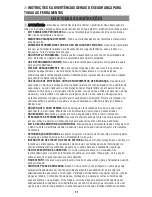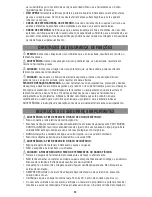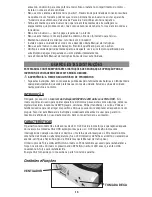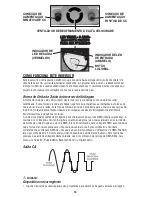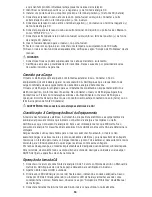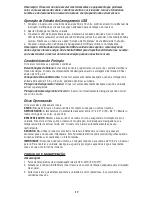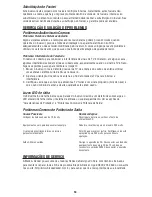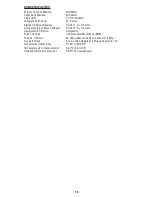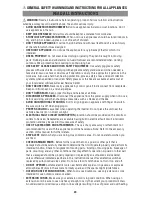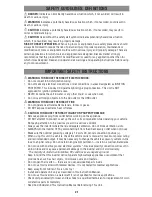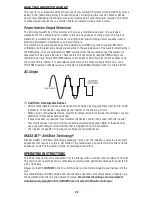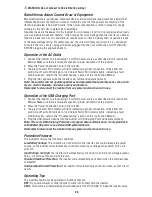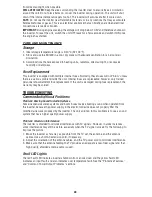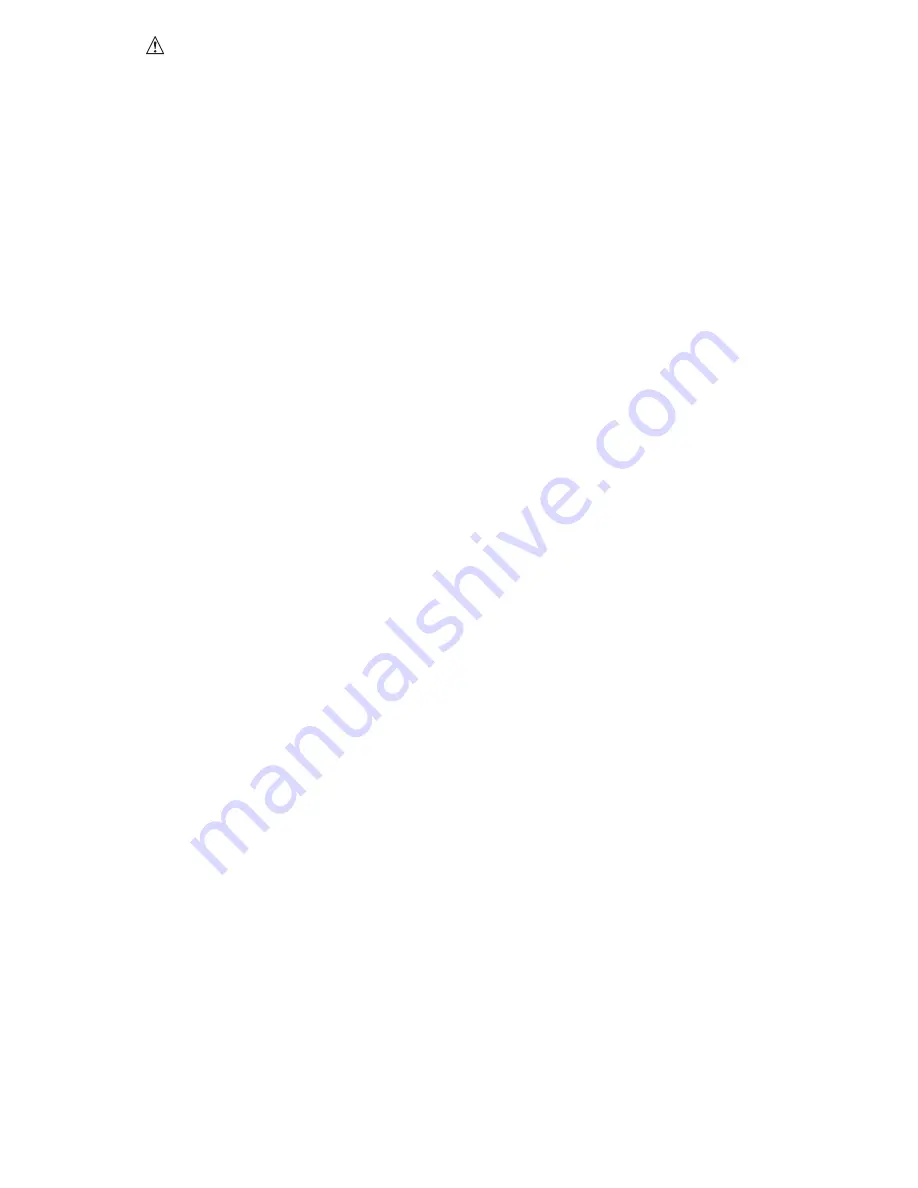
25
WARNING: Do not connect to AC distribution wiring!
Rated Versus Actual Current Draw of Equipment
Most electrical tools, appliances, electronic devices and audio/visual equipment have labels that
indicate the power consumption in amps or watts. Be sure that the power consumption of the
item to be operated is below 200 watts. If the power consumption is rated in amps AC, simply
multiply by the AC volts to determine the wattage.
Resistive loads are the easiest for the inverter to run; however, it will not run larger resistive loads
(such as electric stoves and heaters), which require far more wattage than the inverter can deliver.
Inductive loads (such as TVs and stereos) require more current to operate than do resistive loads
of the same wattage rating. For safety reasons, the unit will simply shut down if it is overloaded.
To restart the unit, simply unplug all devices plugged into the unit; switch the unit OFF then ON,
BEFORE plugging the appliance back in.
Operation of the AC Outlet
1. Connect the inverter to a functioning 12 volt DC power source as described in this Instruction
Manual. Make sure there is adequate space for proper ventilation of the inverter.
2. Press the Power Pushbutton to turn the unit ON.
3. The green Power LED Indicator will light, indicating a proper connection. If the either the
yellow Input Fault LED Indicator or red Output Fault LED Indicator lights, indicating a fault
condition exists, refer to the “Troubleshooting” section of this Instruction Manual.
4. Plug the (AC) appliance into the Inverter’s AC outlet and operate normally.
Note: The Inverter will not operate appliances and equipment that generate heat, such as hair
dryers, electric blankets, microwave ovens and toasters.
Remember to disconnect the inverter from any power source when not in use.
Operation of the USB Charging Port
1. Connect the inverter to a functioning 12 volt DC power source as described in this Instruction
Manual. Make sure there is adequate space for proper ventilation of the inverter.
2. Press the Power Pushbutton to turn the unit ON.
3. The green Power LED Indicator will light, indicating a proper connection. If the either the
yellow Input Fault LED Indicator or red Output Fault LED Indicator lights, indicating a fault
condition exists, refer to the “Troubleshooting” section of this Instruction Manual.
4. Plug the USB-powered device into the inverter’s USB Charging Port and operate normally.
Note: This unit’s USB Charging Port does not support data communication. It only provides 5
volts/500mA DC power to an external USB-powered device.
Remember to disconnect the inverter from any power source when not in use.
Protective Features
The inverter monitors the following conditions:
Low Battery Voltage:
This condition is not harmful to the inverter, but could damage the power
source, so the inverter will automatically shut down when input voltage drops below 10.5 ± 0.3
volts DC.
Input Voltage Too High:
The inverter will automatically shut down when DC input voltage exceeds
15.5 ± 0.3 volts, as this can harm the unit.
Thermal Shutdown Protection:
The inverter will automatically shut down when the unit becomes
overheated.
Overload/Short Circuit Protection:
The inverter will automatically shut down when a short circuit
occurs.
Operating Tips
The inverter should only be operated in locations that are:
DRY:
Do not allow water or other liquids to come into contact with the inverter.
COOL:
Surrounding air temperature should ideally be 10-20°C (50-68°F). Keep the inverter away

